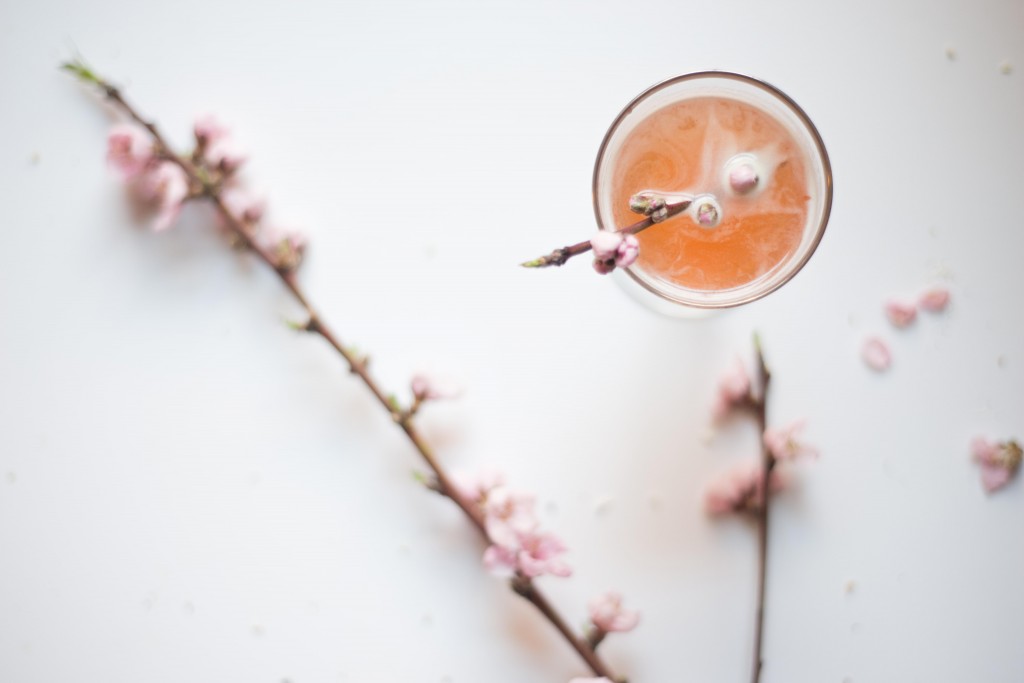3 Imagist Rules For Making Great Cocktails
/by Eric Kozlik, photos by Amber Breitenberg

Every year when cherry blossom time rolls around in Washington, D.C., I can’t help but think of Ezra Pound’s iconic two-line poem, “In a Station of the Metro”:
The apparition of these faces in the crowd;
Petals on a wet, black bough.
- From Personae, 1926
This poem reminds me of all the people who crowd into Metro during the annual Cherry Blossom Festival, it can also prompt us to reflect on the other types of beauty blooming in this city. In fact, I’ll take it one step further: As a mixologist and maker of bitters, I believe that this poem and the creative movement that it was part of can teach us a few important lessons about cocktails—poems we enjoy not on the page, but in the glass.
Imagism: A Budding Movement
Pound drafted the poem in Paris, and it took him years of revision to pare it down from its original thirty lines to its final form. It is one of the shortest poems in the modern poetic canon, and it stands out as a brilliant example of lyric compression and the minimalist aesthetic.
As someone who thinks a lot about cocktails, poetry and matters of taste, I’m always looking to apply the ideas of great poets and thinkers to a liquid medium, and it just so happens that cherry blossom season in the DMV offers a great opportunity to do just that. What most people don’t know is that, around the same time the first cherry trees were planted in our nation’s capital in 1912 (a gift of good-will from the mayor of Tokyo), Ezra Pound, a young American ex-pat, was cultivating a poetic movement known as “Imagism” across the Atlantic in England.
Imagism, in a nutshell, was a movement that valued tightly coiled poems filled with nouns and verbs—objects and energy—and not a whole lot else. Thankfully for us, Pound had a great love for making up rules for people to follow and he left us with these three directives that he believed all Imagist poems must heed:
- Direct treatment of the “thing,” whether subjective or objective
- To use absolutely no word that does not contribute to the presentation
- As regarding rhythm: to compose in the sequence of the musical phrase, not in sequence of a metronome
Now, if I were to translate these rules into today’s speech, they’d sound something like this:
- Don’t mess around with abstractions and flowery metaphors—show the reader something!
- Why use ten frumpy words when you can use one really awesome word?
- Rhyme and meter are for suckers. Take off the training wheels and write the way actual people speak and think.
Pound’s Rules Reinterpreted
Although this stuff might not seem revolutionary to us now, it really shook up the poetry world in the early twentieth century. But the question remains for us here, today, in this post: how can we apply Pound’s rules to cocktail art?
Let’s put a liquid and slightly boozy spin on the rules and see if they still make sense:
- Direct treatment of the cocktail
That is, do your homework and figure out what you’re actually making and try to think and refer to it accordingly. Great chefs don’t go around saying that they’re serving an “Indian salsa”—that food already exists and it’s called a chutney. Similarly, don’t call something a “whiskey Negroni.” That particular cocktail is called a Boulevardier. Cocktail names are important, and to respect the world by calling things by their true names is an imperative of poets, chefs, and cocktail artists.
- To use absolutely no ingredient that does not contribute to the sensory experience
This rule should be self-evident…but sadly, it’s not. We live in a time where complexity rules, and that principle extends also into the cocktail world. If you’re designing a cocktail, you should aim for its simplest possible iteration. If there is a question as to whether or not an ingredient is necessary, let your nose and your taste buds guide you.
The decision to keep things simple and elegant has all kinds of logistical and sensory ripple effects that influence the ability of others to replicate and enjoy a cocktail.
- As regarding flavor: to compose for the flavor, not for the recipe.
Are you making a Martini with a particularly dry, high-proof gin? Crank up the dry vermouth a smidge. Are you making a Manhattan with Japanese whiskey? Try using Japanese plum wine instead of sweet vermouth. Like rhyme and meter, recipes are technical rules that can produce delightful results when understood and then violated intentionally and for the right reasons. In the end, the decision to divert from a recipe should always be made with the taste of the cocktail and the experience of the drinker in mind.
A Liquid Poem
I’ll leave you now with a cocktail recipe that is my tribute to this time of year and to the excellent local spirits that make our city stand out as a destination for cocktail seekers and blossom hunters alike. It’s made using all local ingredients, and it comes out a delightful, light pink color that immediately brings to mind the flowering trees that bring D.C. to life each year.
The Sign of Spring
1 oz Catoctin Creek Rye
½ oz Don Ciccio & Figli Ibisco (Hibiscus) Liqueur
½ oz Capitoline Rosé Vermouth
3 Dashes Embitterment Orange Bitters
Combine in a shaker with ice, shake vigorously, and strain into a coupe glass. Enjoy while thinking how pleasant it is that the days are growing longer and the air is alive with new growth.
Eric Kozlik is the co-founder of Embitterment Bitters. He earned his MFA in poetry from the University of Maryland and lives in Washington, D.C.



